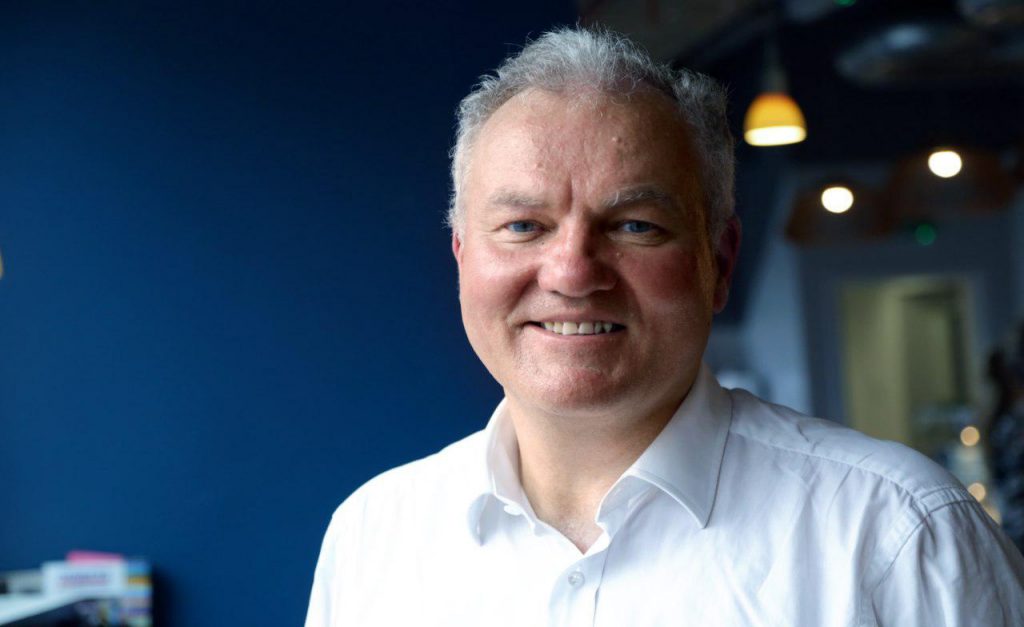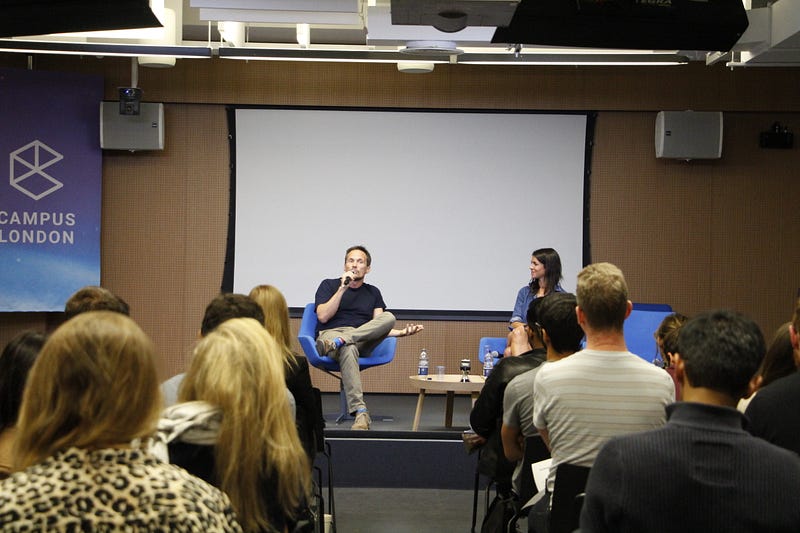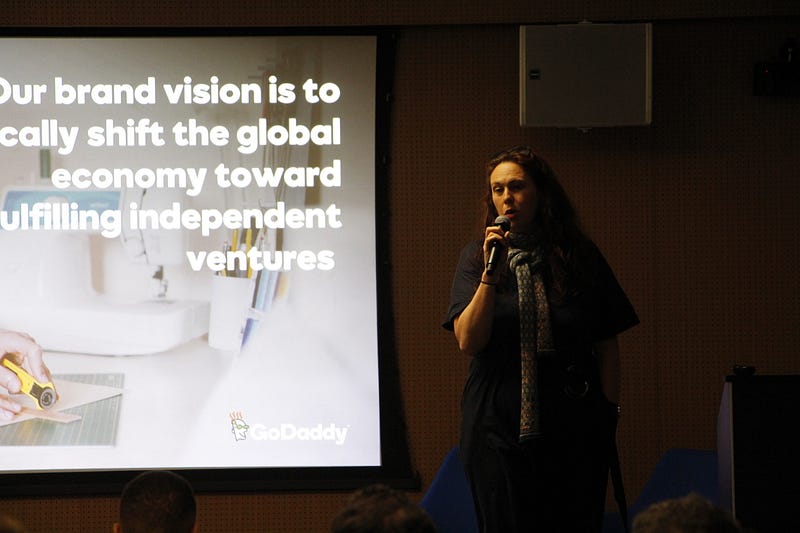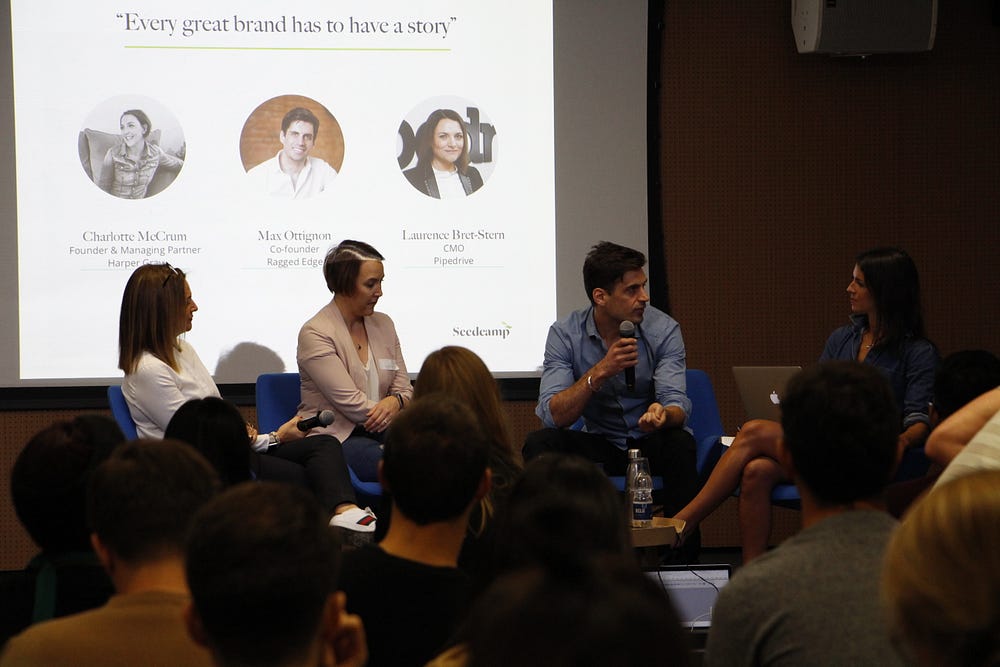
We’re thrilled to welcome Stephen Allott as the newest member of the Seedcamp team. A seasoned entrepreneur and scale-up expert, Stephen joins us as Venture Partner and will be supporting the investment team and our portfolio companies as they grow.
Stephen is best known for his work at Micromuse, the network management software company he scaled to 800 employees and took to IPO on NASDAQ. With roles spanning President, CFO and lead board director, Stephen knows firsthand what it takes to lead a US public company and the importance of brilliant product matched with world-class sales skills.
“To have someone of Stephen’s calibre and level of expertise join our team is an amazing coup for the whole of the Seedcamp Nation,” comments Seedcamp Managing Partner, Carlos Espinal. “Stephen has the most incredible breadth of experience and has firsthand scaled companies, built teams and solved complex problems across everything from organisational design and sales funnels to corporate strategy and fundraising. He’s been with us for less than a month but the impact has already been significant both for us and our companies. We’re dedicated to bolstering our support function and ensuring we put our companies in the best possible stead to reach Series A and beyond and Stephen is the perfect person to help us do that.”
With great enthusiasm Stephen comments, “Having seen Seedcamp blossom, it’s clearly become Europe’s leading seed fund over the past few years. I’m excited to get stuck in and support our companies scale-up and reach their potential.”
Stephen’s diverse career also includes helping scale Red Gate, from 10 to 300 people, and an advisory role for the UK Government G-Cloud Digital Marketplace, helping the service grow to over £4bn in cumulative sales in six years as well as early years consulting at McKinsey. A graduate of Trinity College Cambridge, Stephen was called to the Bar at Gray’s Inn and is a quondam City Fellow of Hughes Hall, Cambridge University. He has published “From Science to Growth” and “Transforming Public Sector Sourcing”.
Stephen is passionate about uses of AI to drive innovation and supports Cognition X in their mission to make AI expertise universally accessible. His passion and expertise on the topic has led him to produce reports for the London Mayor on how to transform London into the AI powerhouse of the world.
We’re delighted to have Stephen join us and excited for all of our portfolio companies who will benefit from his wealth of experience.
At Seedcamp, we’re focused on supporting our companies and their growth across all touchpoints. Last month we held the first Seedcamp Marketing Summit for marketing and brand leads across our portfolio. Led by our own Head of Marketing, Natasha Lytton, the full-day event included a host of amazing speakers who shared their experiences of building pioneering businesses and interactive workshops.
Speakers included: Richard Reed, Co-founder @ innocent and @ JamJar Investments — you can listen to the full podcast of his conversation with Natasha here — Kate Cox, CMO EMEA GoDaddy, Joby Russell, CMO @ Purple Bricks, Laurence Bret-Stern, CMO Pipedrive, Katy Turner, MD Multiple, Malcolm Bell, Co-founder Zaggora, Mulenga Agley, former VP Marketing Monese & Founder of GrowthCurve, Max Ottignon, Co-founder of branding agency, Ragged Edge, and comms expert Charlotte McCrum, founder of Harper Gray Communications.
Read on as Natasha shares her top 10 takeaways from the day and tune in here to listen to a number of the live sessions.

There’s a million and one things to think about when building your startup: product, tech functionality, fundraising, hiring — you name it — and this often means any thought around your brand: the story, the purpose, why you should engage or buy, what makes you special etc is left behind until the ‘oh shit, we actually need customers now moment’.
I strongly believe this is too late and thinking around your brand, whether you’re b2b or b2c, has to start right at the beginning of your journey because your brand is absolutely everything you do, think, make, touch and say. It’s a hell of a lot more than just a strapline and a logo.
We covered a whole range of topics from measurement in the digital age to the value of traditional media, how to tell compelling stories and how to retain your customers.
Here are my top 10 takeaways from the Summit:
Kate Cox, CMO EMEA @ GoDaddy kicked off the day talking about measurement in the digital age and how GoDaddy has grown into one of the world’s largest domain and registrar and web hosting companies. With a mission far extending beyond the reality of ‘what’ the product does, “to radically shift the global economy towards life-fulfilling independent ventures’’, Kate discussed the importance at GoDaddy of thinking as a B2C brand first, with the knowledge that this is the customer segment they need to be talking to, and shared how this impacts the activity they engage in: everything from TV advertising to social media competitions.

The marketing funnel consists of different components that will garner different results. While we all want that graph of hockey stick growth to put in our investor reports, to think only of short-term results is shortsighted and won’t build you a brand for the long-run. So what are the different measures Kate considers to ensure short, medium and long-term results?
Short-term:
Medium-term:
Long-term:
Traditional media advertising — TV, billboards, radio, buses etc — is often dismissed as ‘old-guard’ in the digital age with startup brands, in particular, favouring channels that enable you to easily track acquisition; better target the customer segment you’re trying to reach and that can be simply switched on and off or adjusted depending on results.
TV can seem prohibitively expensive but, when done right, the results speak for themselves. Joby Russell is CMO at British online estate agency, Purple Bricks, one of, if not ‘the’, biggest success stories to emerge from the UK Proptech sector. And a lot of that is down to their early use of traditional media tactics and outlets to acquire customers.
According to Joby, 58% of people say TV evokes an emotional response and provides better brand recall than other media advertising. For Purple Bricks, TV was a key chance to stand-out from their competitors and build consumer trust by demonstrating that even though they were an online-only proposition, they still could play with the ‘big boys’ by leveraging traditional media outlets.
With advances in tracking, regional targeting and audience segmentation, TV advertising has evolved significantly and enabled Purple Bricks to scale their value, build mindshare among consumers and position the brand through communications while also reducing the CEP of digital search.
BUT, TV advertising is not for everyone and with significant changes in how we consume media along with growing competition and tight budgets, Joby sets out how NOT to run a TV advertising campaign below.
Do not invest in TV if you will:
No longer can a brand just sell you a product and expect consumers to blindly follow. So, how do you go about building a brand with purpose? Katy Turner, Managing Partner Multiple, shared her belief in the principle of the ‘3 P’s’: Purpose + Positioning + Personality = Brand.
Your purpose is you raison d’etre; the thing that gets you up in the morning; that fuels passion, drives culture, community, aspiration and builds the dream. According to Katy, you’ll never be done with defining your purpose and it will grow as you do as a brand.
Your mission is your “measurable ambition.” It’s what helps you to operate the business; set strategy; get buy-in; agree objectives; encourage accountability and set goals.
Then your vision, according to Katy, is the ‘promised future you are trying to create’. Your vision helps you to set long-term thinking; inspire advocates; unite collaborators and articulate impact.
For Mulenga Agley, the 5 channels for scalable growth are as follows:
According to Mulenga, growth is achieved by systems, not channels and you need to focus energies on creating a growth system that can be modelled and replicated across channels rather than just throwing all of your efforts — and money — into one.

Richard Reed, co-founder of innocent drinks and JamJar Investments, knows a thing or two about building much-loved household brands and telling great stories. The innocent founding story is not just a thing of myth: three friends at a festival selling their homemade juices and with two jars asking people whether they should quit their jobs or not. The overwhelming majority said yes so, quit their jobs they (eventually) did and from there innocent was born, the healthy drinks company on a mission to do some good both for you and the world.
For Richard, every brand has to have a story and founding myth but this only works when it’s based on the truth. At innocent, this truth is apparent not just in the name, the founding story and the mission, ‘to make drinks that make it easy to do yourself some good’ but also in the culture and brand behaviours. From hiring processes and simple things, such as ensuring even payslips had the word ‘thank you’ on them, to donating 10% of all profits to charity, the innocent brand has consistently had a strong and believable story at its core.
This passion for storytelling and culture is something Richard brings to his role at JamJar Investments, backing some of the most compelling consumer tech and offline brands in the UK including the likes of Deliveroo, Babylon Health, Graze.com, Heist and Papier.
One of the biggest mistakes I see in — let’s be honest — most businesses is a failure to consistently communicate what it is your company does, and why, internally. Fail to get aligned internally and you’ve got no chance of communicating consistently and getting customers to fully understand what it is you do externally.
This is something that was echoed by Laurence Bret-Stern. With 7 years at LinkedIn and now CMO at Pipedrive, Laurence is an expert when it comes to building compelling B2B brands. To ensure internal buy-in, Laurence has always made it her mission to ensure everyone internally is aligned around the brand mission and vision. She stresses that:
“People tend to overcomplicate things — try to keep it simple and repeatable, especially when you are trying to scale.”
In his former role as VP Marketing at Monese, Mulenga knows a thing or two when it comes to building out a solid growth team. These are his top tips for how to structure yours for optimal results:
Acquisition and hiring people top-of-funnel is the go-to strategy for early-stage startups but what happens once you’ve got them through the door? Do you have the right tools and structures in place to push them through the funnel and drive repeat purchase?
For Malcolm Bell, Seedcamp EiR and Co-founder of e-commerce business, Zaggora, retention is key to their continued success. Not only does it help increase customer LTV but it improves economies of scale, proves product-market fit and demonstrates predictability (investors love if you can prove predictability of purchase!)
There are so many people starting out on their marketing journey and a breadth of communities and networks out to support you on yours. At Seedcamp this is something we have identified as a key part of our offering to portfolio companies but it’s not exclusive to us. From Startup Marketing groups on Facebook to LinkedIn groups and meetups, there’s plenty of people who are in a similar position or a few steps ahead that you can learn from.
So, the final piece of advice is put yourself out there; ask if you’re not sure and make sure you, in turn, pay it forward and offer your own advice and experiences to others around you.
Copyright © 2019 Seedcamp
Website design × Point Studio